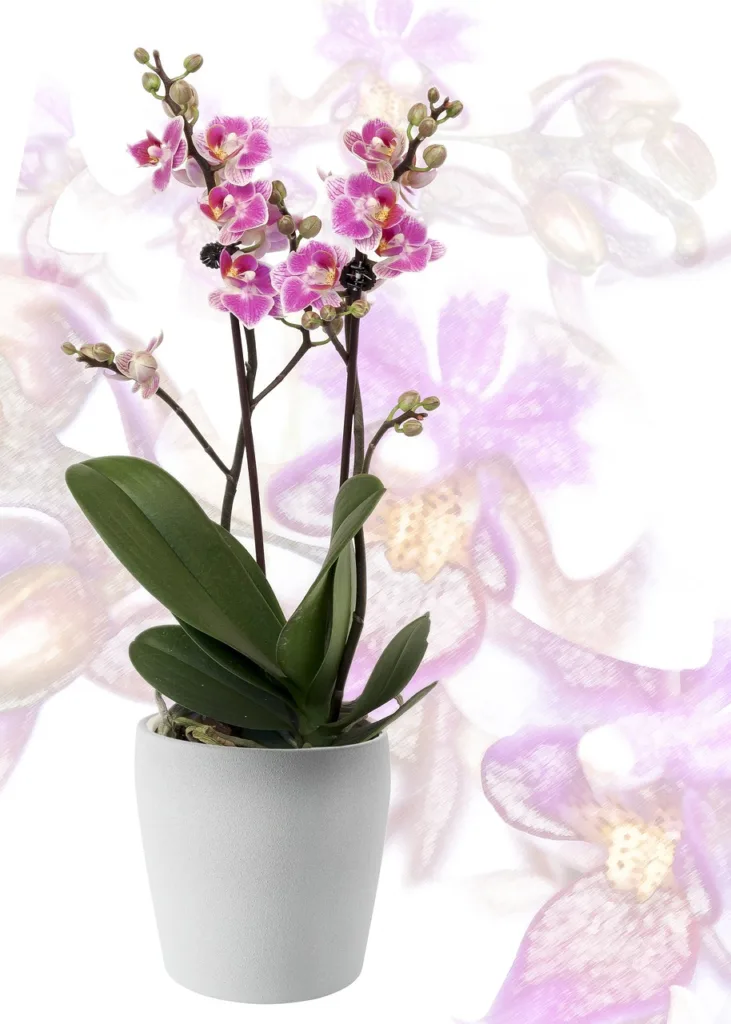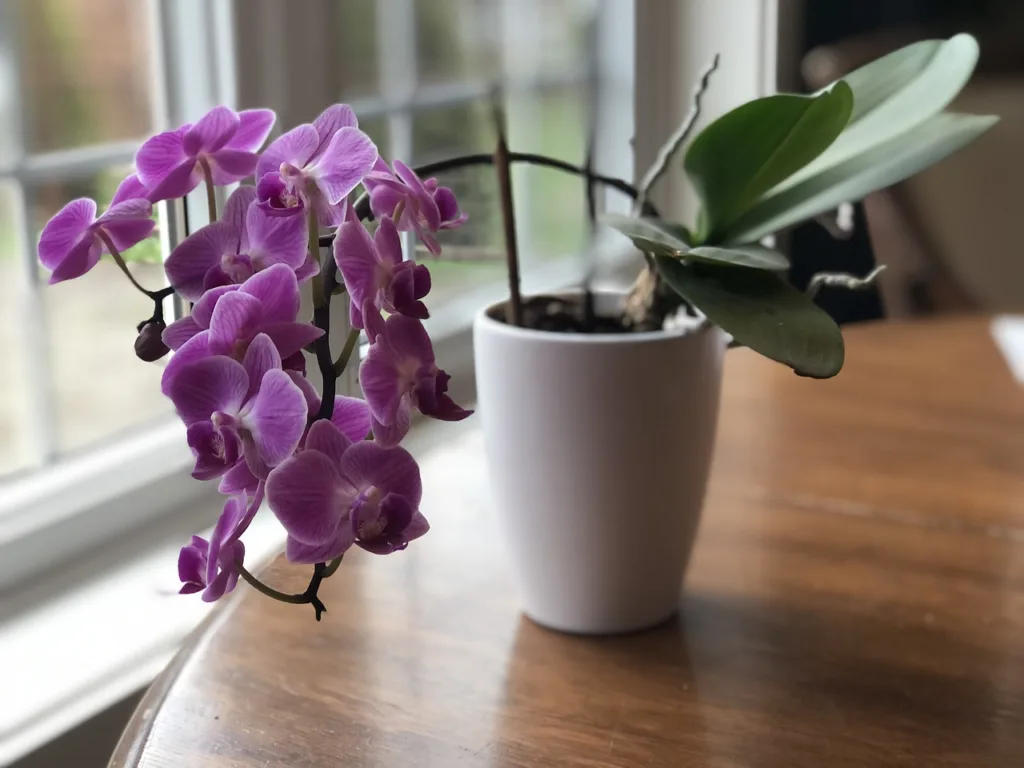Today’s question is how long do orchid flowers last. However, the orchid flower duration varies depending on factors such as the orchid species, environmental conditions, and care provided. In general, the lifespan of an individual orchid flower is typically a few weeks to several months.
The Lifespan of Orchid Flowers
Orchid flowers, like all living things, have a natural lifespan. However, the exact duration can vary depending on several factors, including the orchid species, environmental conditions, and care provided.
Orchid Species and Flower Longevity
Different orchid species, with their unique characteristics, exhibit varying lifespans for their flowers. While some orchid flowers bloom for only a few weeks, others can mesmerize us with their beauty for several months.
Understanding the specific characteristics of the orchid species you own is crucial in determining how long their flowers are likely to last.
“Each orchid species has its own life cycle, and knowing your orchid’s species is the first step in understanding its flower longevity.” – Orchid expert, Dr. Evelyn Collins.
Environmental Factors and Flower Lifespan
The environment in which an orchid thrives plays a significant role in determining the longevity of its flowers. Key environmental factors that influence flower lifespan include:
- Temperature: Orchids are sensitive to temperature fluctuations. Extreme temperatures, whether too hot or too cold, can shorten the lifespan of their flowers. Maintaining a stable temperature within the range suitable for the specific orchid species is vital in prolonging their bloom.
- Light: Orchids have varying light requirements depending on their species. While some thrive in bright, indirect light, others prefer more shade. Providing the ideal amount of light, as recommended for your orchid species, can lead to longer-lasting flowers.
- Humidity: Orchids originate from tropical regions, where humidity levels are higher. Replicating their natural environment by maintaining adequate humidity can promote the longevity of their flowers.
- Air Circulation: Adequate air circulation is crucial for orchids to thrive. Good ventilation helps prevent the development of diseases and prolongs the life of their flowers.
“Creating the ideal environment for your orchid will not only extend the lifespan of its flowers but also enhance its overall health and vitality.” – Orchid enthusiast, Sarah Johnson.
Care and Maintenance for Prolonged Bloom
Apart from the inherent characteristics and environmental factors, proper care and maintenance are instrumental in extending the longevity of orchid flowers. Consider the following tips to help your orchids bloom for an extended period:
- Watering: Orchids require careful watering to avoid overwatering or dehydration. Striking a balance and being mindful of the specific watering needs of your orchid species is essential for healthy and long-lasting flowers.
- Fertilization: Providing your orchid with the appropriate nutrition through regular fertilization can enhance its overall health, leading to prolonged blooms. However, it is crucial to follow the recommended dosage and frequency for your specific orchid species.
- Pruning: After the last flower on an orchid’s spike has faded away, pruning the spike encourages the orchid to direct its energy towards new blooms. Pruning also prevents the development of fungi or diseases.
- Repotting: Orchids benefit from repotting every few years to refresh their growing medium and promote healthy growth. However, it is crucial to choose the right time and method to report, ensuring minimal disturbance to the orchid’s root system.

What To Do After Orchid Flowers Fall Off
After orchid flowers fall off, there are specific care steps you can take to promote the overall health of the plant and encourage future blooming. Here’s what to do after orchid flowers fall off:
Remove bad flower spikes: Trim the flower spike just above a visible node using clean and sharp shears or pruning shears. The nodes are small, nub-like structures with spikes. Cutting above a node can encourage the orchid to produce a new spike from that point.
Assess the health of the orchid: Check the overall health of the orchid. Make sure the leaves are green and firm. If there are any yellow or mushy leaves, cut them off to maintain the vitality of the plant.
Continue Regular Care: Maintain a regular orchid care routine. This includes providing proper light, temperature, and humidity conditions. Continue to water the orchid when the top inch of potting mix becomes dry.
Add fertilizer: During the active growing season (usually spring and summer), fertilize orchids regularly with a balanced orchid fertilizer. Follow the recommended dosage on the fertilizer package.
Inspect for new growth: Keep an eye on the base of the orchid where new growth (new leaves or pseudobulbs) may emerge. New growth is a positive sign that the orchid is healthy and potentially preparing for future blooms.
Provide rest period: Some orchids benefit from a rest period after flowering. During fall and winter, reduce watering slightly to simulate dry weather. This rest period can encourage the orchid to grow new flowers.
Be patient: Orchids do not grow fast and it may take some time for new flowers to develop. Be patient and consistent in your self-care efforts.
How Do I Get My Orchid to Flower Again
Provide Adequate Lighting: Orchids generally require bright, indirect light. Place your orchid near a north or east-facing window, but avoid direct sunlight, especially during the hottest part of the day.
Maintain proper temperature: Orchids thrive in temperatures between 65–75°F (18–24°C) during the day and slightly cooler temperatures at night. Providing a temperature difference between day and night can promote flowering.
Proper watering: Let the top inch of the potting mix dry out before watering again. Orchids like to be kept consistently moist but not waterlogged. Use room temperature water and water thoroughly, letting excess water drain off.
Humidity Control: Orchids usually prefer high humidity. You can increase the humidity by placing the orchid pot on a tray filled with water and pebbles or by using a humidifier.
Use a well-draining potting mix: Orchids typically grow in loose, well-drained soil. Use a special orchid mix or a combination of bark, sphagnum moss, and perlite to ensure good aeration around the roots.
Fertilize regularly: Feed your orchids regularly with a balanced orchid fertilizer during the growing season (spring and summer). Reduce or stop fertilization during the dormant period in fall and winter.
Provide adequate ventilation: Good aeration is important for orchids. Make sure the orchid is not crowded with other plants, as this can restrict air movement. Light air circulation helps prevent fungal problems.
Choose the right orchid: Some orchids are more likely to rebloom than others. Phalaenopsis orchids are known for their ability to rebloom under proper care.
Prune appropriately: After the flowers fade, trim the flower spike just above a visible node. New spikes can develop from these nodes, potentially causing future blooms.
Provide a rest period: Many orchids go through a rest period after blooming. During this time, reduce watering and allow the orchid to rest. Resume regular care when new growth appears.
Be patient: Orchids are not fast growers and may take some time to bloom again. Patience and consistent care are key to encouraging orchids to bloom again.

Conclusion
Orchid flowers, with their ephemeral beauty, bring joy and elegance to any space. Understanding the factors influencing their longevity and implementing proper care techniques can help you extend the bloom time and enjoy their enchanting presence for a longer duration.
Remember to consider the specific characteristics of your orchid species, create an optimal environment, and provide consistent care to ensure your orchids grace your home with their captivating flowers for as long as possible.
“With the right care and attention, orchid flowers can delight the senses for an extended period, rewarding you with their unmatched beauty.” – Renowned botanist, Dr. Richard Peterson.
Remember, each orchid is unique, and while general guidelines can be helpful, it’s always best to research the specific needs of your orchid species to maximize their flowering potential.
People also ask
- How long do indoor orchid plants last?
- With proper care, indoor orchid plants can live for many years. Some orchids are known for their longevity, and they can continue to produce blooms under the right conditions.
- What to do with an orchid after the blooms fall off?
- After orchid blooms fall off, trim the flower spike just above a node using clean scissors. Continue regular care, including watering, fertilizing, and providing proper light. New blooms may develop from the old spike or a new one.
- How do I keep my orchid blooming?
- To keep your orchid blooming, provide bright, indirect light, maintain appropriate temperatures, water when the top inch of the potting mix is dry, and fertilize regularly during the growing season. Prune old spikes, and be patient for new growth.
- How long does it take an orchid to rebloom?
- The time it takes for an orchid to rebloom varies. It can range from several months to over a year, depending on the orchid species, care provided, and environmental conditions.
- Do orchids rebloom on old stems?
- Some orchids can produce new blooms on old stems. After the initial flowering, trim the old flower spike just above a node. New spikes may emerge from the nodes and develop into new flowers.
- Why does my orchid grow leaves but no flowers?
- Orchids may focus on leaf growth rather than flowering due to factors like insufficient light, inadequate temperature differences between day and night, or lack of nutrients. Adjust care to address these factors and encourage flowering.
- Do orchids grow back after the flowers fall off?
- Yes, orchids can grow back after the flowers fall off. With proper care, including pruning old spikes, providing regular care, and ensuring optimal growing conditions, orchids may produce new spikes and bloom again.

